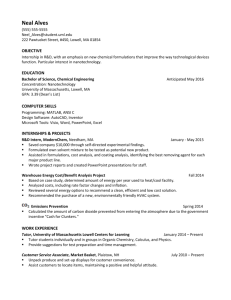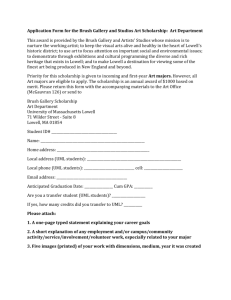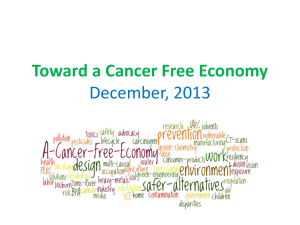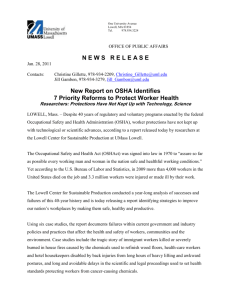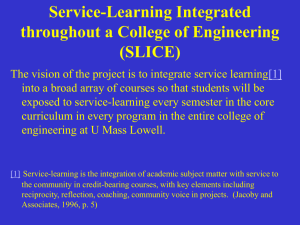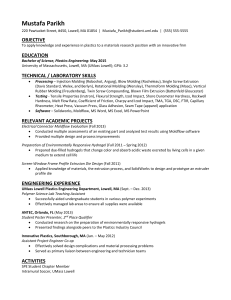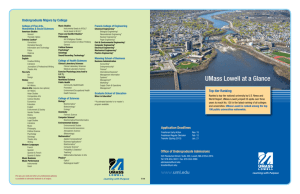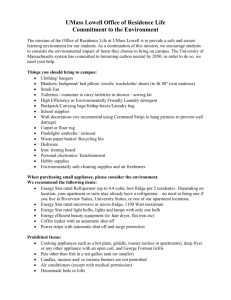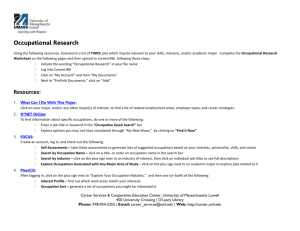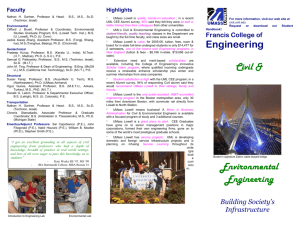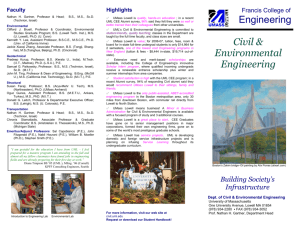Cancer study - Lowell Center for Sustainable Production
advertisement
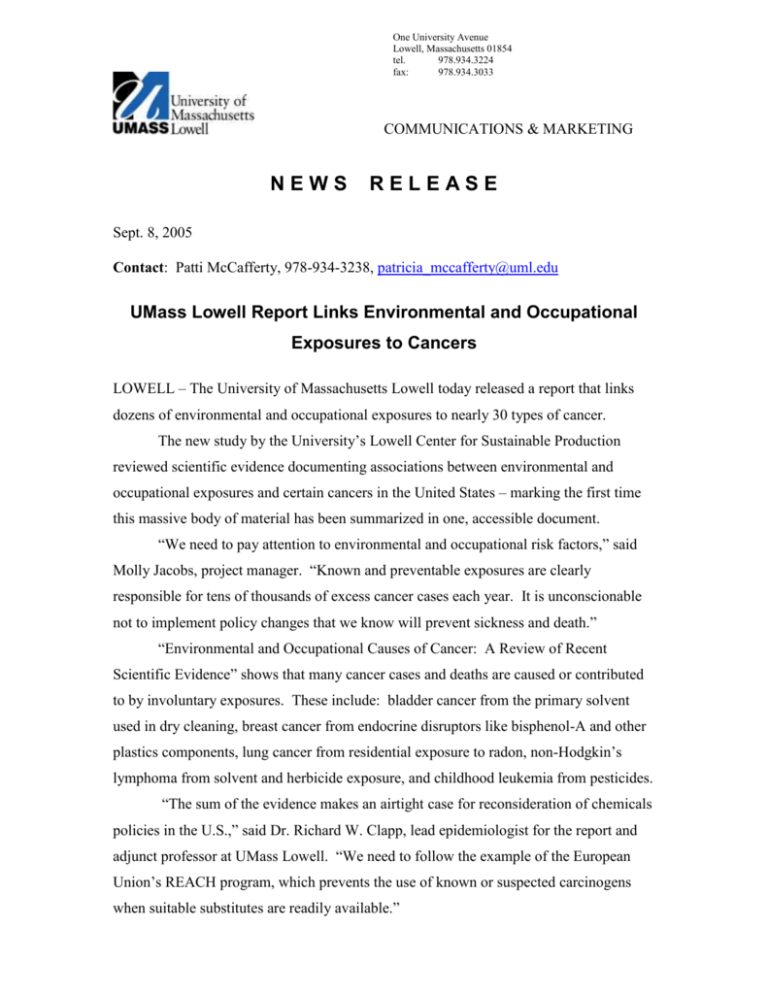
One University Avenue Lowell, Massachusetts 01854 tel. 978.934.3224 fax: 978.934.3033 COMMUNICATIONS & MARKETING NEWS RELEASE Sept. 8, 2005 Contact: Patti McCafferty, 978-934-3238, patricia_mccafferty@uml.edu UMass Lowell Report Links Environmental and Occupational Exposures to Cancers LOWELL – The University of Massachusetts Lowell today released a report that links dozens of environmental and occupational exposures to nearly 30 types of cancer. The new study by the University’s Lowell Center for Sustainable Production reviewed scientific evidence documenting associations between environmental and occupational exposures and certain cancers in the United States – marking the first time this massive body of material has been summarized in one, accessible document. “We need to pay attention to environmental and occupational risk factors,” said Molly Jacobs, project manager. “Known and preventable exposures are clearly responsible for tens of thousands of excess cancer cases each year. It is unconscionable not to implement policy changes that we know will prevent sickness and death.” “Environmental and Occupational Causes of Cancer: A Review of Recent Scientific Evidence” shows that many cancer cases and deaths are caused or contributed to by involuntary exposures. These include: bladder cancer from the primary solvent used in dry cleaning, breast cancer from endocrine disruptors like bisphenol-A and other plastics components, lung cancer from residential exposure to radon, non-Hodgkin’s lymphoma from solvent and herbicide exposure, and childhood leukemia from pesticides. “The sum of the evidence makes an airtight case for reconsideration of chemicals policies in the U.S.,” said Dr. Richard W. Clapp, lead epidemiologist for the report and adjunct professor at UMass Lowell. “We need to follow the example of the European Union’s REACH program, which prevents the use of known or suspected carcinogens when suitable substitutes are readily available.” UMass Lowell News Page 2 of 2 Despite notable gains in reducing incidence and mortality rates for certain cancers, the authors lament that cancer constitutes a growing burden on society. They note that the mortality rate for all cancers combined (excluding non-melanoma skin cancer) is the same today as it was in the 1940s and the annual rate of new cases increased by 85 percent over the past 50 years. “Major cancer agencies have largely avoided the urgency of acting on what we know to prevent people from getting cancer in the first place,” said researcher Genevieve Howe. The report disputes the often-cited, 25 year-old analysis by Sir Richard Doll and Richard Peto that attributes only 2 to 4 percent of cancers to involuntary environmental and occupational exposures. “Our review makes it clear that new knowledge about multiple causes of cancer, including involuntary exposures, early-life exposures, synergistic effects, and genetic factors, renders making such estimates not just pointless, but counterproductive,” Clapp said. The nearly 50-page report was produced as part of the Lowell Center for Sustainable Production’s Environmental Health Initiative and sponsored by the Collaborative on Health and the Environment. It is available at www.sustainableproduction.org and www.cheforhealth.org. The Lowell Center for Sustainable Production at UMass Lowell uses rigorous science, collaborative research, and innovative strategies to promote communities, workplaces and products that are healthy, humane and respectful of natural systems. UMass Lowell, a comprehensive university with special expertise in applied science and technology, is committed to educating students for lifelong success and conducting research and outreach activities that sustain the economic, environmental and social health of the region. UML offers its 11,000 undergraduate and graduate students more than 80 degree programs in the colleges of Arts and Sciences, Engineering and Management, and the School of Health and Environment and the Graduate School of Education. Visit the website at www.uml.edu.
